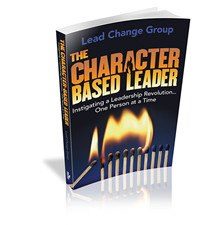Earlier this week we launched a new series titled what does HR really stand for: Human Resources or Human Remains?

When I reached out to my network asking them to participate in this series, I shared an excerpt of a conversation I had with someone with an MBA and years of HR experience.
“Chery I have been in HR for X number of years, I have my MBA, I’ve attended tons of seminars and I’ve NEVER heard anyone talk about the HUMANS.“
And then I asked these questions:
- How do you balance the need to protect the company from lawsuits with the needs of the real live human beings you serve?
- What tips do you have for organizations that are seeking to bring the Human back to Human Resources?
 This post is the second in the series and was written my another Lead Change Member and Co-Author of The Character-Based Leader Book, Mary Schaefer. Mary is the President of Artemis Path, Inc. and her passion is challenging others to Reimagine Work. This is what Mary had to say…
This post is the second in the series and was written my another Lead Change Member and Co-Author of The Character-Based Leader Book, Mary Schaefer. Mary is the President of Artemis Path, Inc. and her passion is challenging others to Reimagine Work. This is what Mary had to say…
My friend and colleague, Chery Gegelman, and I have talked about putting “the human back into Human Resources” more than once. She recently asked me to offer my thoughts on what HR should stand for, and how to bring the human back into it (or ask, should we?). I was reminded of a post I wrote back in 2010. Reading it through today, I still stand by it.
HR or not?
If I could recreate HR my first thought would be to clarify the purpose those in charge in an organization want HR to serve. Fair or not, organization members have expectations of the word “human.” If it’s in your title, you are expected to do your work in a human way, with consideration of how humans work. In too many organizations it appears that the purpose HR serves is “Employee Compliance” and “Employee Data Administration.” If that is the case, then let’s use those labels instead of “Human Resources.”
If we still choose to call the work Human Resources, then we might as well embrace the expectations that go with the word “human,” and be prepared to accept the consternation and downright anger caused when expectations go unmet.
Recreating HR.
If we stick with “HR,” I would train anyone who works in HR to understand how to work with human nature. I don’t know if that means educating them on sociology, systems thinking, brain science, or what. Just as an example, David Rock’s SCARF model is a useful foundation, describing what happens when we do and don’t address humans’ needs for status, certainty, autonomy, relatedness, and fairness. What I do know is that it is imperative to understand how human beings tick, whether you are working in training and development, strategy, recruiting, comp and benefits, etc.
What’s at stake with the “human” aspect?
We would not think of denying a resource, like a machine, the oil it needs to perform at capacity or deliver quality results. I’ve seen one too many organizations crippled though, because the human beings at work were denied what they needed to perform —and then get blamed for the results.
Often it is assumed that because we are human beings, we know enough about how humans work, at work, without the need for any extra effort or education. Those invested in racecars expect those running the show to have the expertise to make the cars run at peak performance. Why do we treat our human resources any differently?
This is not only HR’s responsibility, but again…
[Tweet “If the word HUMAN is in the title, there is a leadership in this area that is assumed, and needed.”]
[Tweet “If you could recreate Human Resources what would you do? “]
Part III in this series: Putting “The Human” back in Human Resources
Do you want help recreating Human Resources?
![]() Dan Oestrich recommended this book by his friend Cathy Raymond: Reclaiming the Soul of Human Resources
Dan Oestrich recommended this book by his friend Cathy Raymond: Reclaiming the Soul of Human Resources
Image Credit: iStockphoto




When humans meet, a personal RELATIONSHIP comes into existence. This relationship may have many levels, aspects and characteristics. Building and helping others to build working human relations is the foundational contribution and ability of “HR”.
If we need more than the hands and feet of employees, sound and healthy relations is the starting point for engagement, delighted customers and most other business goals we might have.
The traditional compliance focus is counterproductive. Relationally it sets people up against each other and virtually guarantees conflict, eventually leading to a legal winner/loser being declared. This must be the absolute exception rather than the default response.